The Bavarian-style village of Leavenworth seems at once both out of place and perfectly normal among the craggy Washington peaks. Here, even fast-food chains come adorned in Tudor detailing. Mid-summer, heat rises up delightfully from the rocky surrounds—all the better for strolling among shops brimming with lederhosen and cured meats, or for tucking into a wurst garden for a glass of local Dirty Face amber.
Exiting town, farm stands appear among apple and pear orchards. A river bejeweled with white-water rafters comes back into view. Suddenly, the American Alps have turned to Americana, land of plenty and fruit basket to the world. Descend on Wenatchee, home to the state’s second-largest public market—Pybus—as well as the Wenatchee Valley Museum. Housed in a historic post office and federal office, the museum is home to 11,500-year-old Clovis points—arrowheads from the Paleoindian era—and a 1919 Wurlitzer organ.
Turn north from Wenatchee, hugging the mighty Columbia, and the landscape changes again. The east side of the river is blanketed in orchards; the west side rises into high desert cliffs, until eventually shimmering Lake Chelan comes into view. But follow that river on farther, and you come to tiny towns like Omak and Pateros.
Follow Highway 153 into the canyon lands of the Methow Valley, and you’ll see new growth jutting out of the landscape. Or continue north to Okanogan before turning west on Highway 20—perhaps the most beautiful drive in the state. This scenic highway wends its way all the way from the Idaho border to Whidbey Island, in the Puget Sound. Here, though, it rises into the high plains of the Methow Valley. At the junction of 153 and Highway 20 is Twisp, followed 10 miles on by the Old West town of Winthrop, complete with its wooden boardwalks, American West architecture and the oldest legal saloon in Washington state.
Highway 20 climbs west through the high plains into North Cascades National Park, and before long you’re above treeline. Snow often lingers near the roadside all summer. And it’s only after you’ve crested this northern part of the American Alps that you look down on Ross Lake, so blue, thanks to glacial sediment at its bottom, that it looks fake.
